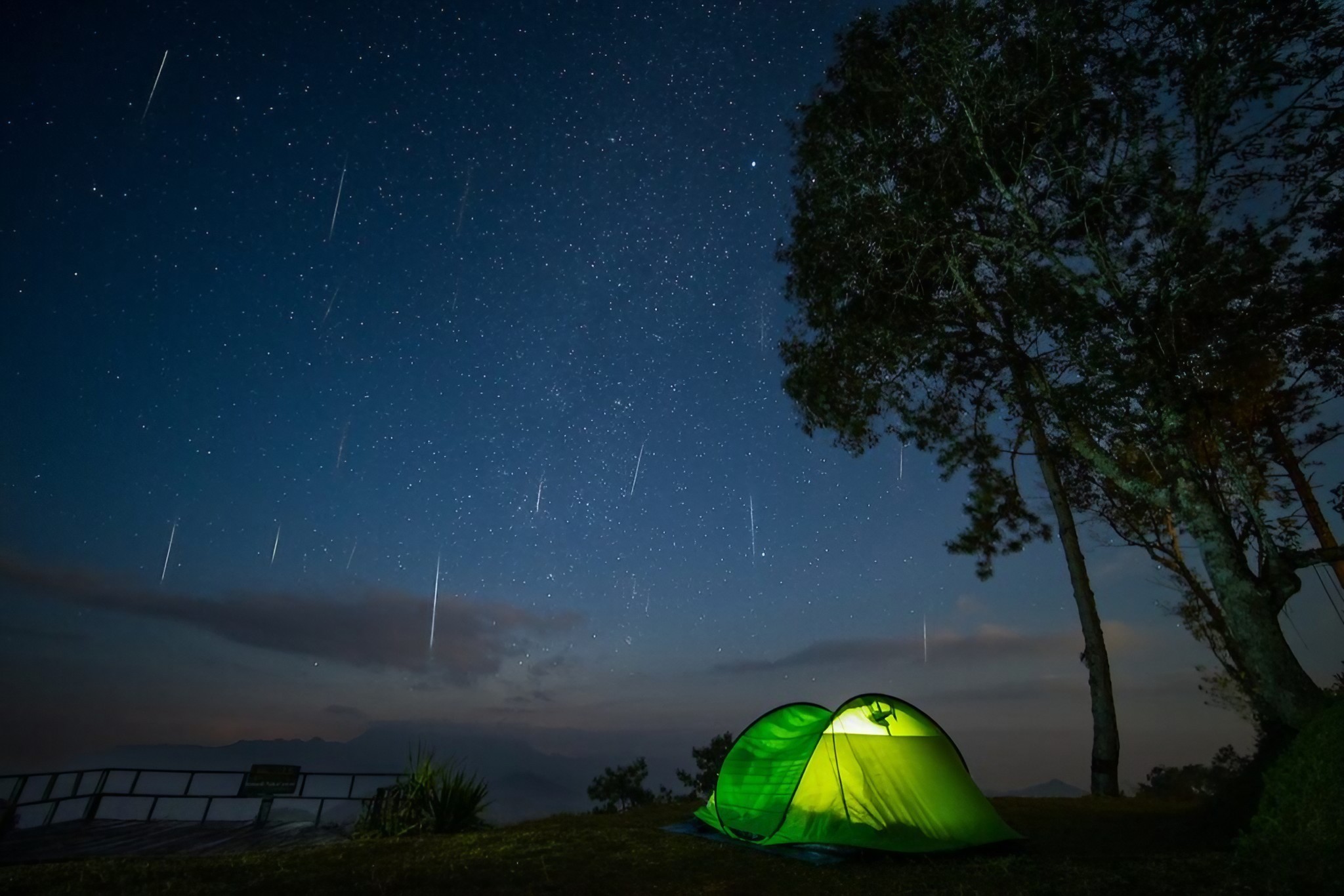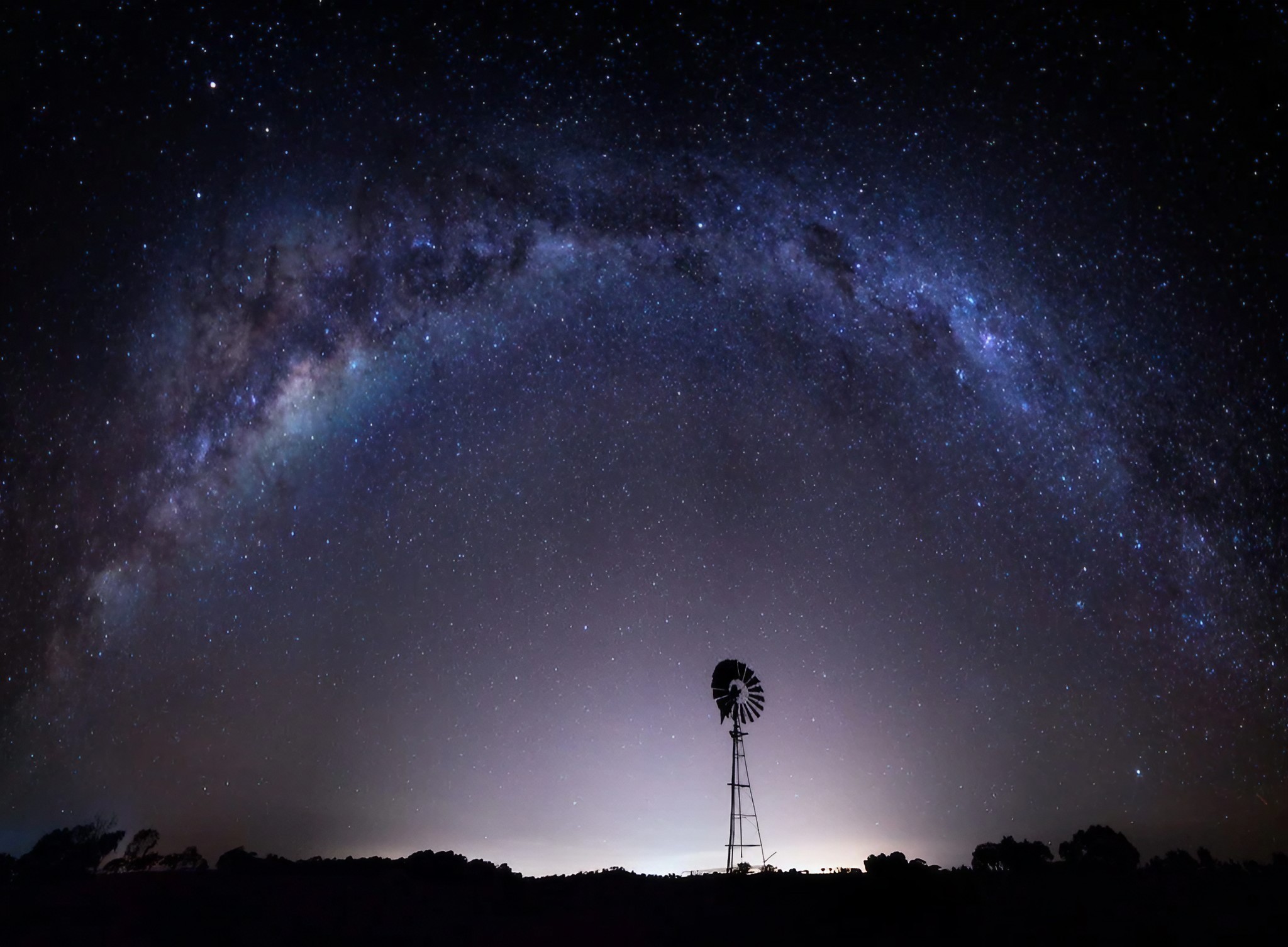There’s something deeply humbling about looking up at the night sky and seeing a tapestry of stars stretching from one horizon to the other. In Hughenden, you don’t need a telescope or even much planning to enjoy that experience—you just need a clear winter’s night, a comfy chair, and a sense of wonder.
Welcome to Hughenden: where the skies are wide, the stars shine bright, and the universe feels just a little closer.
Whether you’re an amateur astronomer, a keen astrophotographer, or just someone who likes to lose themselves in the night sky, winter is the perfect time to stargaze in this part of Outback Queensland. With cool, dry air and minimal light pollution, the heavens truly put on a show here.
Let’s explore why Hughenden is a stargazer’s dream, where to go for the best views, what to look for up above, and how to make the most of your cosmic adventure.

Why Winter is Stargazing Season in Hughenden
If you’ve ever looked up on a winter night and thought, “Wow, the stars seem brighter,” you’re not imagining it. Cooler winter air holds less moisture, making the sky crisper and clearer. Add to that the long nights, low humidity, and Hughenden’s remote location away from city lights, and you’ve got ideal stargazing conditions.
May through August is especially good, as the skies tend to stay cloud-free, and evening temperatures are pleasant enough to sit out in the open with a thermos of tea or cocoa.
Bonus? No mozzies. The cooler weather means you can enjoy the evening without being swarmed by bugs—something every stargazer can appreciate.
Best Stargazing Spots Around Hughenden
You don’t need to go far to see the stars in Hughenden, but a few spots really take the cake when it comes to wide-open skies and epic views.
1. Mount Walker Lookouts
Just 10 kilometres south of town, Mount Walker offers panoramic views that stretch across the landscape—and into the stars. There are six designated lookouts, and once the sun sets, each becomes a perfect perch for a celestial show. The elevated height gives you a better horizon line, meaning you can see constellations rise and set with ease.
Bring a chair or picnic blanket, dress warmly, and head up around twilight to catch both the sunset and the first stars peeking through the twilight.
Tip: Mount Walker is accessible by sealed road, so it’s easy to reach even in a standard vehicle.
2. Porcupine Gorge National Park
By day, Porcupine Gorge is a geological marvel—but by night, it’s one of the most magical stargazing spots in the region. The remote location means no artificial light and pure, uninterrupted darkness.
If you’re camping at the Pyramid camping area, you’re in luck. Simply look up after dinner, and the Milky Way will stretch above you in all its glittering glory. There’s something special about sitting beside ancient rock formations, under a sky that’s just as timeless.
Tip: Take a short walk away from your tent to find an open area with clear views of the sky. Avoid using white torchlight—use a red filter to protect your night vision.
3. Anywhere Outside Town
One of the perks of being in Hughenden is that you don’t have to venture far to escape light pollution. Even a short drive outside of town on a clear night will reward you with skies full of stars. Find a quiet spot along a back road (safely parked, of course), turn off your lights, and let your eyes adjust to the darkness.
Tip: Let your eyes adjust for at least 15–20 minutes without looking at your phone or any bright lights—then watch as the sky comes alive with detail.


What to Look For: Celestial Sights of the Winter Skies
Winter skies are among the best for stargazing in the Southern Hemisphere. The air is clear, the constellations are bold, and there’s plenty happening above. Here are a few celestial treats to watch for during your winter visit to Hughenden.
1. The Milky Way
The Milky Way is at its most spectacular during the winter months. Stretching from the southern to northern sky, it looks like a hazy river of light—but binoculars or a good camera will reveal millions of stars packed together like cosmic glitter.
Look for the Galactic Core—the thickest, brightest part—which becomes visible around May. In rural Hughenden, it’s so vivid it practically casts shadows.
2. Southern Cross (Crux)
One of the most iconic features of the Southern Hemisphere sky, the Southern Cross is easy to find and points almost directly to the South Pole. It’s best seen during winter evenings, rising high in the sky and acting as a celestial compass.
3. Saturn and Jupiter
These two gas giants often make appearances in the winter sky. Jupiter shines brilliantly and is often one of the first objects to appear after sunset. Saturn, slightly dimmer but still impressive, isn’t far behind.
If you have binoculars or a small telescope, you might even glimpse Saturn’s rings or Jupiter’s four largest moons.
4. The Eta Carinae Nebula
Located near the Southern Cross, the Eta Carinae Nebula is one of the brightest nebulae in the night sky. It’s visible to the naked eye in dark conditions and looks especially amazing through binoculars or a camera with a zoom lens.
5. Geminid Meteor Shower (Early May)
While the Geminids are typically associated with December in the Northern Hemisphere, in the Southern Hemisphere, early May often brings a minor meteor event—the Eta Aquariids. Caused by debris from Halley’s Comet, these meteors are known for their speed and brilliance.
Peak viewing is usually around May 5–7, in the pre-dawn hours. You might see up to 30 meteors an hour, especially from darker areas like Porcupine Gorge or Mount Walker.
Tip: Lie back, look east, and be patient. It takes about 30 minutes for your eyes to adjust fully, and then the show begins.
Tips for a Great Stargazing Experience
Whether it’s your first time or your fiftieth, stargazing in Hughenden is always a treat. Here are a few tips to make the most of it:
1. Dress Warmly
Evenings can get chilly in winter, especially in wide open areas—so pack layers, beanies, and maybe even a blanket.
2. Use Red Light Only
White light ruins night vision. Use a red-filtered torch or headlamp to see without disrupting your ability to spot stars.
3. Bring Binoculars
You don’t need a telescope to enjoy stargazing. A simple pair of binoculars can reveal star clusters, nebulae, and even the moons of Jupiter.
4. Download a Stargazing App
Apps like SkyView, Star Walk, or Stellarium use augmented reality to help you identify stars, constellations, and planets in real time.
5. Get Comfortable
A reclining chair, yoga mat, or picnic blanket will make your night under the stars more relaxing. Add a thermos of hot drink, and you’re all set.
6. Don’t Rush
Great stargazing takes patience. Spend time scanning different parts of the sky, and let your imagination wander as you trace patterns and stories in the stars.

Make it Part of Your Trip
Stargazing is the perfect way to wind down after a day of exploring Hughenden’s many attractions—from dinosaur fossils at the Flinders Discovery Centre to hikes through Porcupine Gorge.
Spend the day soaking in the natural beauty and history, enjoy dinner at a local pub, then drive out to a lookout or campsite and lie back under the stars. It’s the kind of simple pleasure that stays with you long after you leave.
Why Hughenden’s Night Skies Matter
In a world filled with screens and distractions, Hughenden offers something rare: stillness. When you lie under a sky full of stars, it’s a chance to connect to the universe, to nature, and maybe even to yourself.
Winter is the prime season for stargazing, and Hughenden’s big Outback skies are the perfect theatre. Whether you’re here for a weekend escape or a longer adventure, don’t miss the chance to look up. You might just see a shooting star—or two.
References:
- https://www.visithughenden.com.au/attraction/porcupine-gorge-national-park/
- https://www.queensland.com/au/en/places-to-see/experiences/nature-and-wildlife/national-parks/how-to-do-porcupine-gorge-national-park
- https://www.photographingspace.com/big5-southern-sky/
- https://science.nasa.gov/mission/hubble/science/explore-the-night-sky/hubble-caldwell-catalog/caldwell-92/